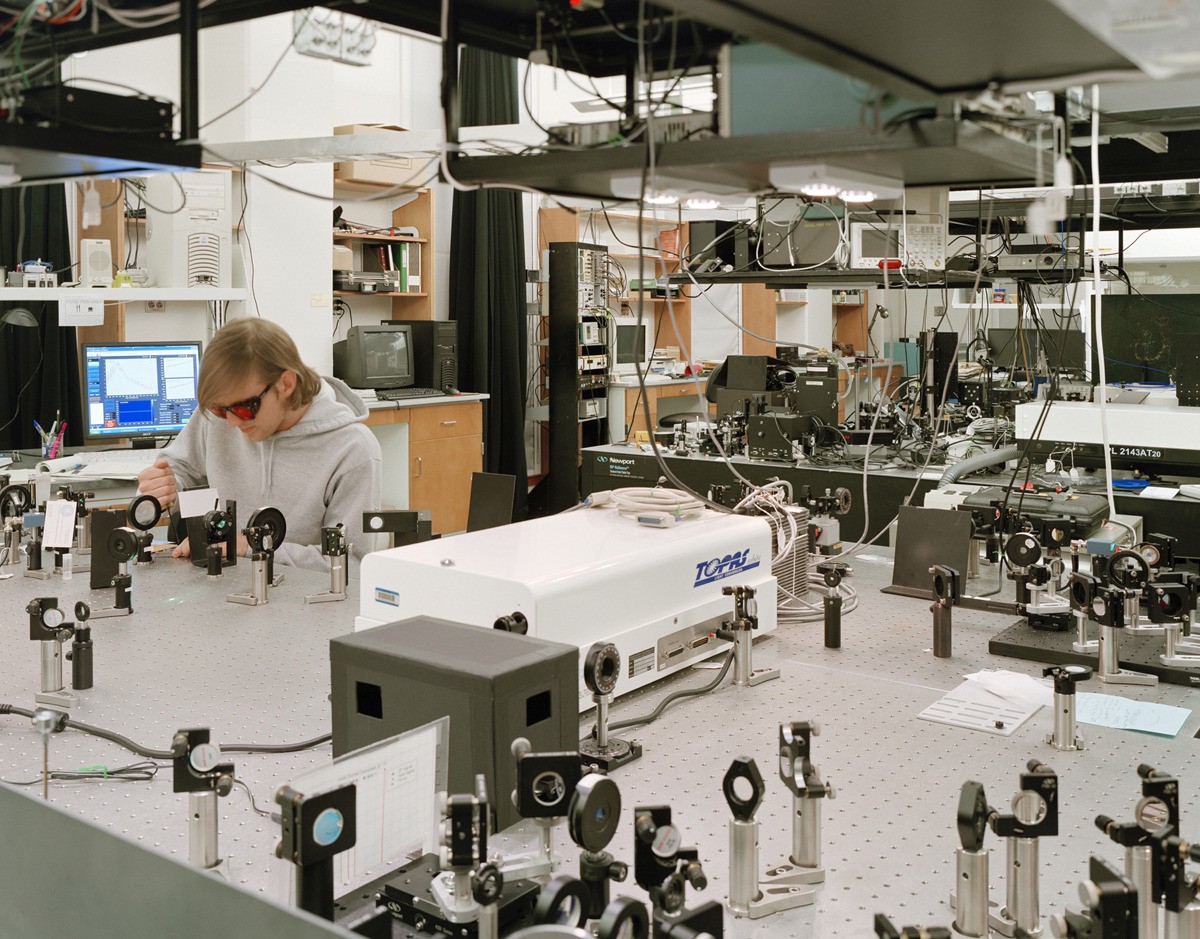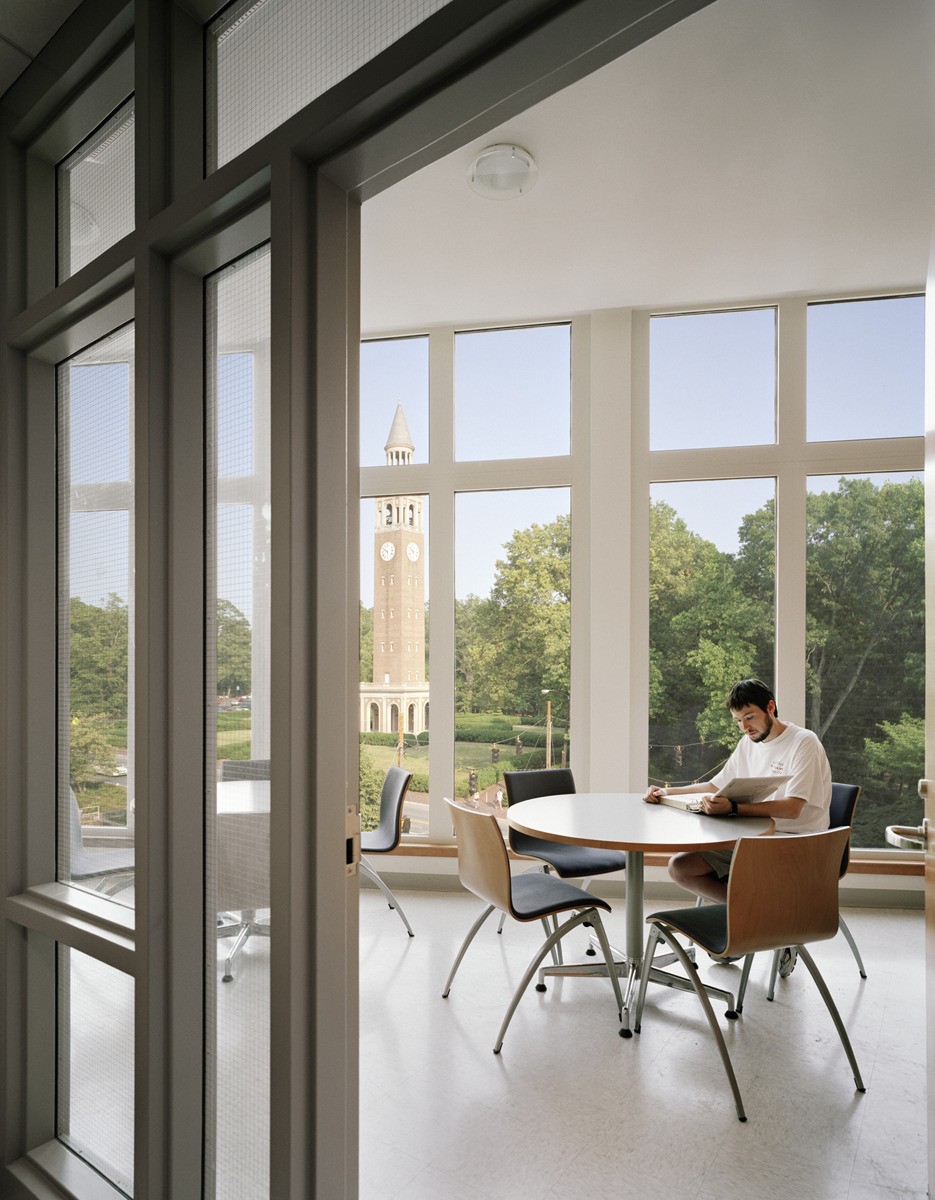University of North Carolina, Chapel Hill - Caudill Lab
Chemistry on Display: Strategic Design & Siting
Caudill Laboratories represents UNC’s ability to enlarge Chapel Hill’s north campus and add to its character, via its contribution to the sciences and its central location. The W. Lowry and Susan S. Caudill Laboratories building includes synthetic, dry, and computational laboratories, as well as shared instrument space. The building carefully flanks the campus library and the historic Polk Place quadrangle.
The careful siting of Caudill Laboratories reinforces campus pathways and provides strong new connections between science programs. The design carefully frames exterior campus spaces and brings the outside in. Large, deep-set windows flood the labs with natural light and provide a direct connection to the campus beyond. Strategically located community spaces promote a strong sense of visual orientation and provide a way to draw natural light deep into the building.
Research is organized into four science neighborhoods— physical, analytical, organic, and polymer chemistry. Special facilities include HEPA-filtered synthetic labs, bio capability, nano capability, and an NMR suite for eight magnets. The building has 110 fume hoods with additional hood capacity. The mechanical equipment lies under a shed-like roof of slate and metal, pierced by actual chimneys.
The three-phase science complex creates a composition of architectural components that is woven into the scale and fabric of north campus. This level of design intent permeated every decision made by the design team, from the use of the English Cross Bond brick pattern on the walls and chimneys to the slate roofs, large muntined windows, and stone and copper details incorporated throughout the complex. The integration of Caudill, a thoroughly modern laboratory, into an historic setting creates a unique sense of place on campus.
PortfolioLocation
Chapel Hill, NC
Building Type
Research Labs, Seminar, Office, Break Out Space
Size
146,000 SF












